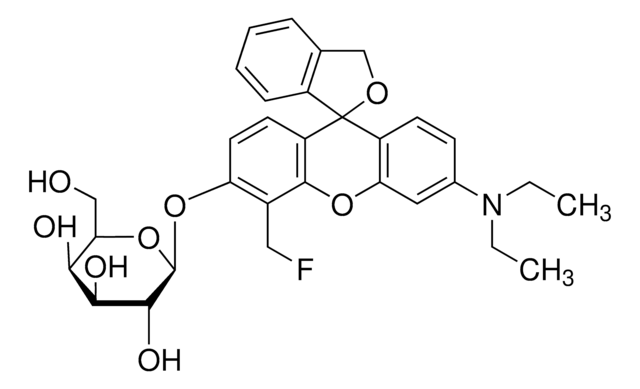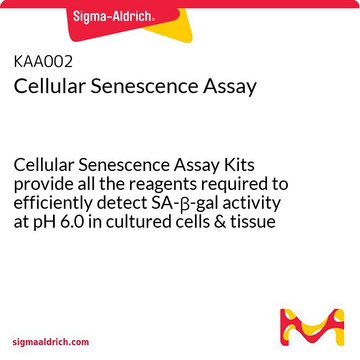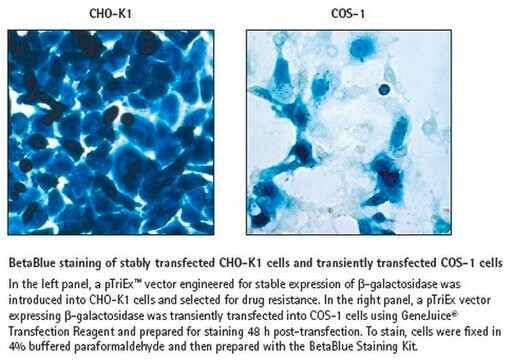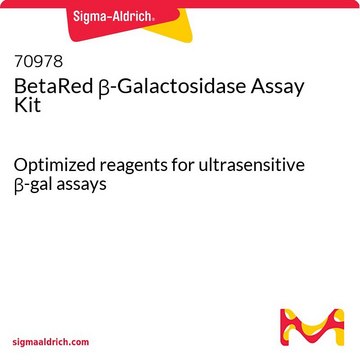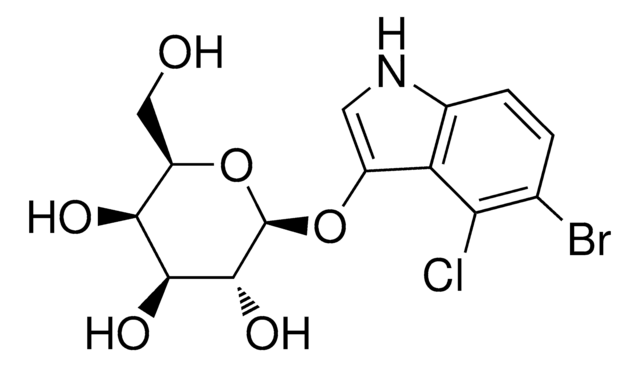CS0030
Senescence Cells Histochemical Staining Kit
sufficient for 100 tests
Sinonimo/i:
Senescent cells IHC kit, cellular β-galactosidase probe
About This Item
Prodotti consigliati
impiego
sufficient for 100 tests
Livello qualitativo
Confezionamento
pkg of 1 kit
Condizioni di stoccaggio
dry at room temperature
Metodo di rivelazione
colorimetric
Condizioni di spedizione
dry ice
Temperatura di conservazione
−20°C
Descrizione generale
Applicazioni
- senescence-associated β-galactosidase assay
- to test for senescence in human pancreatic cancer cells
- adipose-derived stem cells (ADSCs)
- cord blood mesenchymal stromal/stem cells (CBMSC)
Azioni biochim/fisiol
Note legali
Solo come componenti del kit
- X-gal solution 4 mL
- Staining Solution, 10X 15 mL
- Fixation Buffer 10x 15 mL
- Reagent B 1.5 mL
- Reagent C 1.5 mL
- Dulbecco's Phosphate Buffered Saline (PBS) 10x 60 mL
Prodotti correlati
Avvertenze
Danger
Indicazioni di pericolo
Classi di pericolo
Acute Tox. 3 Inhalation - Acute Tox. 4 Dermal - Acute Tox. 4 Oral - Aquatic Chronic 3 - Carc. 1B - Eye Dam. 1 - Muta. 2 - Resp. Sens. 1 - Skin Corr. 1B - Skin Sens. 1 - STOT SE 3
Organi bersaglio
Respiratory system
Rischi supp
Codice della classe di stoccaggio
6.1C - Combustible acute toxic Cat.3 / toxic compounds or compounds which causing chronic effects
Certificati d'analisi (COA)
Cerca il Certificati d'analisi (COA) digitando il numero di lotto/batch corrispondente. I numeri di lotto o di batch sono stampati sull'etichetta dei prodotti dopo la parola ‘Lotto’ o ‘Batch’.
Possiedi già questo prodotto?
I documenti relativi ai prodotti acquistati recentemente sono disponibili nell’Archivio dei documenti.
I clienti hanno visto anche
Articoli
Cell based assays for cell proliferation (BrdU, MTT, WST1), cell viability and cytotoxicity experiments for applications in cancer, neuroscience and stem cell research.
Il team dei nostri ricercatori vanta grande esperienza in tutte le aree della ricerca quali Life Science, scienza dei materiali, sintesi chimica, cromatografia, discipline analitiche, ecc..
Contatta l'Assistenza Tecnica.